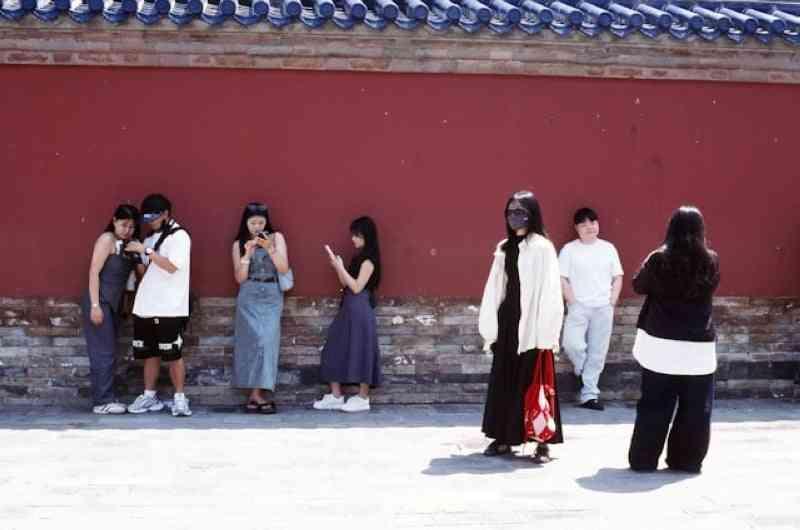Africa-Press – Zimbabwe. China, once synonymous with rigid control and social order, is now witnessing a growing wave of chaos. Acts of random violence, revenge attacks, and expressions of deep-rooted societal dissatisfaction are increasingly frequent, piercing the carefully curated façade of national harmony promoted by the Chinese Communist Party (CCP). Behind these isolated headlines lies a more disturbing truth, a society under immense pressure and a regime struggling to maintain control.
Over recent months, cities across China have been rocked by incidents of indiscriminate violence. On June 17, a Route 126 bus in front of Shenyang University in Liaoning province veered off course, colliding with multiple vehicles and mowing down pedestrians. Official sources blamed it on driver error, but dashcam footage showed the bus blasting through a red light into turning traffic. Online users immediately speculated that the act was intentional, a form of retaliation against perceived injustices. Eighteen people were injured and several killed in the mayhem.
This was not an isolated act of chaos. On June 4 at Wuhan University, a graduate student allegedly carried out a brutal stabbing spree in a university cafeteria, injuring three. Rumours circulated that his thesis had been rejected, and he had previously hinted online about plans to kill at random as a way to exact revenge. A few weeks earlier on May 19, a man in Chongqing’s Kaosimen commercial district hurled Molotov cocktails at a mall entrance, sparking panic and fire before bystanders subdued him. The attack received no coverage in official media; videos shared on Chinese platforms were swiftly scrubbed, though they remained accessible abroad.
Perhaps most chilling was the May 18 shooting at a barbecue stall in Wuhan’s Chalukou district, where unconfirmed accounts claimed two police officers were shot in the head. The official narrative downplayed the event as a minor “injury case,” censoring user comments and discussions on social media. Another troubling episode occurred on May 15, when a black Tesla reportedly rammed into a crowd outside an elementary school in Beijing’s Haidian district, injuring several children during dismissal. The driver’s motive remains unclear, but many suspected another act of lashing out.
These events are not merely tragic aberrations, they are symptoms of a deeper malaise. The CCP’s iron-fisted governance has long relied on censorship, surveillance, and the suppression of dissent to create a perception of stability. However, beneath the surface, China is confronting escalating structural crises. High youth unemployment continues to spike, with millions of educated young people unable to find jobs. Household debt is at a record high. The real estate crisis, which has seen projects abandoned mid-construction and savings evaporate, has pushed many into financial desperation. For countless citizens, hope for personal advancement has been replaced by resentment and nihilism.
In such an environment, suppression of legitimate grievances has only intensified public frustration. Instead of addressing these economic and institutional failings, the CCP has doubled down on information control. Dissidents are jailed, petitions ignored, and protests swiftly quelled. The lack of legal channels for redress has effectively forced some individuals to express their suffering through violence. In many of the incidents mentioned above, the perpetrators left digital footprints, manifestos, cryptic social media posts, or suicide notes that conveyed a consistent message: their violent acts were cries for attention, despair, or revenge against an uncaring system.
Even more alarming is the escalation in tools used to carry out these attacks. While China strictly prohibits private gun ownership and mandates ID verification for knives, violent actors have adapted. They now use Molotov cocktails, vehicles, and even makeshift explosives tools that not only bypass weapon controls but signify growing desperation. The shift from knife stabbings to broader methods of destruction hints at deeper planning and increasing resolve.
The CCP’s failure lies not simply in its inability to prevent these incidents but in its unwillingness to confront their root causes. Rather than engage in introspection or reform, the regime defaults to censorship and superficial crisis management. Each violent event is sanitized in the media, victims are anonymized, and any potential discussion about systemic reform is erased. This blanket denial only magnifies public distrust.
Furthermore, the breakdown of social trust is also reflected in rising tensions between citizens and the state. Police are often viewed not as protectors, but as enforcers of an unjust order. The judiciary, seen as a puppet of the Party, offers little recourse for ordinary people caught in bureaucratic machinery. The absence of institutional empathy has fostered a survivalist mindset, one in which personal grievance turns into public tragedy.
Critically, the CCP’s emphasis on “harmony” as a propaganda tool has become hollow in the face of these realities. The Party once held that stability justified its monopoly on power. Yet the growing frequency of public disorder undermines that argument entirely. When citizens no longer believe the state can or will protect them or worse, when they believe it is complicit in their suffering social contract collapses. Random violence becomes both a weapon and a warning.
The cycle now unfolding is dangerous. Economic stagnation breeds hopelessness, censorship masks reality, and acts of desperation erupt unpredictably. Until the CCP acknowledges the magnitude of this societal breakdown and commits to transparency, justice, and reform China will continue to spiral into episodes of chaos disguised as anomalies.
What remains uncertain is whether the regime will adjust course or continue silencing its citizens until the next tragedy pierces the silence.
Sun Lee is a pseudonym for a writer who covers Asia and geopolitical developments.
For More News And Analysis About Zimbabwe Follow Africa-Press






